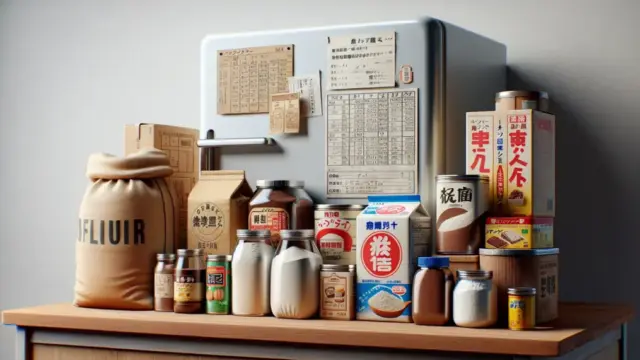Arabica coffee is beloved by many coffee enthusiasts for its rich flavors and enticing aromas. As one of the most popular coffee varieties, it is a must-have for those who appreciate the nuances of taste and scent. In this article, we’ll delve into the allure of Arabica coffee, exploring its characteristics, selection methods, and brewing techniques. This guide will serve as your first step toward a deeper appreciation of the coffee world, so let’s dive in!
We’ll also touch on the history of coffee and the main varieties available, ensuring you get a complete picture of what makes Arabica coffee so special. We’ll provide valuable insights on choosing beans and understanding roast levels, making it easy for beginners to follow along comfortably.
- Learn about the history and varieties of Arabica coffee
- Understand how to select beans and the differences in roast levels
- Discover recommended brewing methods and tips for storage
1. Coffee Basics and Varieties
Coffee is a beloved beverage enjoyed around the globe, rich with history and a variety of types. The different kinds of coffee primarily depend on the region where it’s grown and the characteristics of the beans. Among these, Arabica coffee stands out for its rich flavor and aromatic qualities. In this section, we’ll delve deeper into the history of coffee and its main varieties, laying the groundwork to appreciate the allure of Arabica coffee even more.
The History of Coffee
The origins of coffee date back approximately 1,500 years, believed to have started in Ethiopia. From there, it spread to the Arabian Peninsula and gradually made its way across the world. Initially, coffee was used as a herbal remedy, but it soon established itself as a popular beverage. The coffee culture flourished significantly under the Ottoman Empire, and eventually, it reached Europe and America, giving rise to the diverse ways we enjoy it today.
Understanding the history of coffee allows us to appreciate the cultural and traditional depth that this beloved drink embodies.
- Coffee originated in Ethiopia around 1,500 years ago
- The Ottoman Empire played a crucial role in developing coffee culture
- Coffee spread worldwide, leading to various drinking styles
Main Types of Coffee
There are primarily two types of coffee: Arabica and Robusta. Arabica coffee is known for its aromatic qualities, acidity, and delicate flavor. In contrast, Robusta coffee boasts a stronger bitterness and higher caffeine content, offering a bolder taste experience. By understanding the unique characteristics of each type of bean, you can better discover the coffee that suits your personal preferences.
Moreover, the flavor of coffee can vary greatly depending on the region it’s grown and its cultivation methods. For instance, Arabica coffee from Ethiopia and Colombia has distinct flavors influenced by the local climate and soil. By exploring the wide range of coffee varieties, you can truly appreciate the depth and richness of this beloved beverage.
- The two main types are Arabica and Robusta
- Arabica is known for its aromatic qualities and acidity
- Enjoy unique flavors depending on the region of cultivation
2. The Characteristics of Arabica Coffee
Arabica coffee is beloved by many for its unique flavor and aroma, but it also has distinct cultivation conditions and growing methods. In this section, we’ll explore the ideal environment for Arabica coffee and delve into its flavor characteristics. By understanding the care that goes into producing Arabica, you can enhance your appreciation of this delightful beverage.
Cultivation Conditions for Arabica
Arabica coffee thrives primarily in high-altitude regions. In these elevated areas, temperatures are cooler, and the day-to-night temperature variation is significant, allowing the beans to mature slowly and develop rich flavors. Adequate rainfall and fertile soil are also essential for the growth of Arabica coffee. Regions that meet these conditions produce particularly flavorful Arabica beans.
Additionally, Arabica is susceptible to diseases, which means it requires careful management. Farmers pour their love and effort into nurturing these plants, and their dedication is reflected in the quality of the beans.
- Arabica thrives best at high altitudes
- Temperature variations enhance flavor
- Careful management by farmers impacts quality
Flavor Characteristics and Enjoyment
Arabica coffee is generally characterized by its acidity, alongside a sweetness and fruity notes. This combination creates a pleasant aroma upon sipping, leaving a clean aftertaste. Notably, Arabica from Ethiopia and Colombia boasts unique flavors that captivate those who drink them.
To fully enjoy Arabica coffee, it’s important to choose a brewing method that highlights its flavor. You can savor it through various methods such as drip, French press, or espresso. Additionally, the roast level of the beans influences the flavor profile, making it a fun experience to discover your preferred roast.
- Arabica features acidity and sweetness
- Enjoy diverse flavors from different regions
- Flavor varies with brewing methods and roast levels
How to Choose Arabica Coffee
To truly enjoy Arabica coffee, it’s essential to understand both the selection of beans and the differences in roasting levels. By finding beans that match your preferred flavors and brewing methods, you can significantly enhance your coffee experience. In this section, we’ll delve into some key points to consider when choosing Arabica coffee, so take note!
Choosing Your Beans
When selecting Arabica coffee beans, the first thing to focus on is their origin. Regions like Ethiopia, Colombia, and Brazil each produce beans with unique flavors and aromas. For instance, Ethiopian beans are known for their floral notes, while Colombian beans are celebrated for their balanced and easy-drinking characteristics.
Another important factor is the freshness of the beans. Newly roasted beans boast rich flavors and high aromas, so it’s best to opt for the freshest options available. Additionally, choosing organic or fair-trade beans not only ensures quality but also supports sustainable farming practices.
- Enjoy diverse flavors based on origin
- Fresh beans enhance flavor
- Consider organic and fair-trade options
The Impact of Roasting Levels
The way Arabica coffee is roasted also plays a significant role in its flavor profile. Roasting levels directly affect the color, aroma, and taste of the beans, with options including light, medium, and dark roasts. Light-roasted beans offer a pronounced acidity and fruity aroma, while medium roasts strike a good balance, making them easy to drink. Dark roasts, on the other hand, present a stronger bitterness and often carry flavors reminiscent of chocolate or nuts.
Finding the roasting level that suits your taste can greatly expand your enjoyment of Arabica coffee. Experimenting with the different roasting levels will help you discover your perfect cup.
- Flavor changes with roasting levels
- Light roasts are fruity and acidic
- Dark roasts reveal bitterness with chocolate notes
4. How to Brew and Store Arabica Coffee
To truly enjoy the rich flavors of Arabica coffee, it’s essential to know the right brewing techniques and storage methods. In this section, we’ll cover some recommended brewing methods and key points for storing your coffee. We hope this guide helps you savor authentic Arabica coffee right in your home.
Recommended Brewing Methods
When it comes to brewing Arabica coffee, there are several methods to choose from, but two of the most popular are drip brewing and French press. Drip brewing allows you to extract the beans’ flavors effectively, resulting in a fragrant cup of coffee. By paying attention to the water temperature and pouring technique, you can create a truly delicious brew.
On the other hand, the French press method extracts the oils and fine particles from the beans, giving you a rich and full-bodied flavor. You can adjust the brewing time to achieve your preferred strength. Whichever method you choose, both will let you fully enjoy the unique taste of Arabica coffee, so be sure to give them a try!
- Drip brewing offers a fragrant cup of coffee
- French press delivers a rich flavor
- Pay attention to brewing time and water temperature
Key Points for Storage
To enjoy Arabica coffee at its best, proper storage is crucial. First, keep the beans away from direct sunlight and store them in a cool, dry place. Using an airtight container can help maintain the beans’ freshness. Additionally, it’s best to use opened beans as soon as possible.
If you need to store them for an extended period, consider freezing them. Just make sure to seal them tightly before placing them in the freezer. When you take them out, only remove the amount you need right away, and avoid refreezing the leftovers.

If you’re interested in this topic, you might also enjoy our article “Understanding the Differences Between Arabica and Robusta Coffee”. It provides a detailed look at the characteristics and flavor differences between Arabica and Robusta coffee, deepening your appreciation for the various types of coffee available.
- Store in a cool, dry place away from direct sunlight
- Use an airtight container to keep them fresh
- Sealing is key when freezing
Summary
Understanding the allure of Arabica coffee can truly enhance your coffee experience. By familiarizing yourself with its unique characteristics and cultivation conditions, you can bring out its rich flavors and aromas to the fullest. Additionally, knowing how to select the right beans and understanding the differences in roasting levels will help you discover your perfect cup. Moreover, practicing the correct brewing methods and storage techniques will ensure that you can enjoy fresh, delicious coffee anytime.
Coffee is more than just a beverage; it offers moments of enjoyment and relaxation. Take this opportunity to find the ideal Arabica coffee that suits your taste and indulge in a richer coffee life.
- Understand the characteristics and cultivation conditions of Arabica coffee
- Discover your perfect cup through bean selection and roasting levels
- Enjoy delicious coffee anytime with proper brewing and storage techniques
Be sure to find your favorite Arabica coffee and elevate your daily coffee rituals. We’d love to hear from you! Please share your coffee experiences with us in the comments!
















































Comment